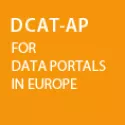DCAT-AP for High-Value Datasets (HVD) is an annex for the DCAT Application Profile that is based on the Data Catalogue Vocabulary (DCAT) developed by W3C.
DCAT-AP HVD offers users of DCAT-AP the possibility to adhere to the High-Value Datasets Implementing Regulation (HVD IR) with little additional effort. The HVD IR was adopted by the European Commission in December 2022 as part of their data strategy and the growing importance of data, in particular for datasets that have been identified as being of high value.
DCAT-AP HVD captures the key notions of the HVD in a uniform way, which assists the implementation of the HVD IR and enables cross-data portal search for data sets, making public sector data better searchable across borders and sectors.
1. What are the benefits of using DCAT-AP for High-Value Datasets (HVD)?
One of the main benefits of adopting DCAT-AP for High-Value Datasets (HVD) is that it promotes a common usage of DCAT-AP, facilitating interoperability and data sharing among different data catalogues within the scope of HVD IR. It does so by highlighting datasets falling into the six High-Value Datasets thematic categories: geospatial, earth observation and environment, meteorological, statistics, companies and company ownership, and mobility
In addition, it enables:
- Compliance with Regulation by ensuring datasets meet the minimum metadata requirements of the HVD IR, aiding implementers and data providers in regulatory compliance.
- Assessment Support by assisting implementers in assessing their dataset’s conformity with the regulation, driving improvements towards full compliance.
2. Who developed the solution?
DCAT-AP for HVD is a joint initiative of:
- The DCAT-AP (HVD) Working Group;
- the Directorate-General for Communications Networks, Content & Technology: DG CONNECT;
- the Directorate-General for Digital Services: DG DIGIT - in particular the SEMIC action of the former ISA² programme, now called the Digital Europe Programme (DEP);
- the PSI (Public Sector Information) Expert Group; and
- the Directorate-General for Environment: DG ENV.
3. How is DCAT-AP HVD maintained?
All changes in the specification are discussed with the DCAT-AP (HVD) and PSI Working Groups to make sure that changes do not negatively impact the operation of implementations and the interoperability across the network of data portals, and publicly communicated.
4. DCAT-AP HVD key milestones

5. Get started

| Discover the HTML documentation of the latest version DCAT-AP for HVD. |

| Discover the content of the GitHub branch of DCAT-AP dedicated to the release of DCAT-AP for HVD. |

| Read the blog article on Application Profiles: What are they and how to model and reuse them properly? |
6. Get involved!
Do you want to participate in the work of our DCAT-AP Working Group? Share your comments and change requests via the GitHub DCAT-AP repository.
7. Any questions?
8. About SEMIC
Visit the SEMIC Support Centre on Joinup.

